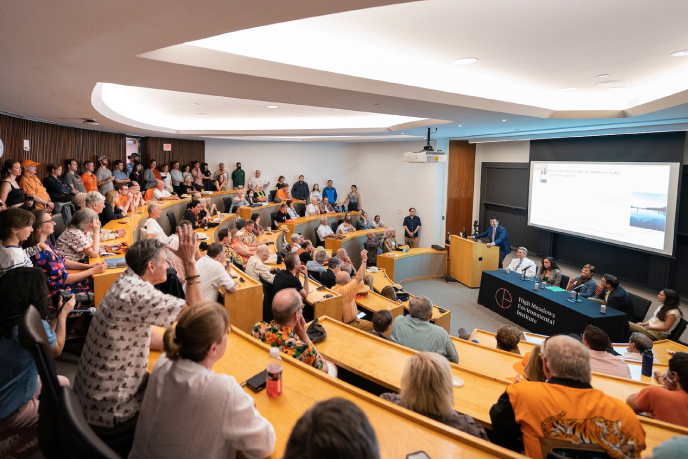Kenya Ripley-Dunlap ’24


Ecology and Evolutionary Biology
Fish Ecology From Ear Stones (Otoliths) and Coral Skeletal Material Past and Present
Certificate(s): Chinese Language and Culture, Gender and Sexuality Studies
I focused on two topics in marine ecology: cod trophic level changes over the past few centuries and humpback whale migration patterns. Nitrogen isotope contents can relay information about an individual’s place in the food web, with a higher concentration of nitrogen-15 signifying a higher trophic level. To understand changes in cod trophic levels, I analyzed modern and archeological cod otoliths — fish ear bones — using a denitrifier method. This method converts organic bound nitrogen to nitrous oxide using processes including oxidation, pH adjustments, and bacteria sparging, which is quantified by nitrous oxide spectroscopy. I used the same method to analyze coronulid barnacles, which grow on humpback whales. The nitrogen isotopic content of the coronulid at different locations is related to where the humpback whale was at the coronulid’s time of growth, which allows the whale’s migration pattern to be mapped. I am thankful to have had the opportunity to carry out the method from the first step of drilling samples all the way to the last step of spectroscopy data retrieval. Working with so many amazing people and understanding the interconnectedness of research has inspired me to seek out more environmental research opportunities in the future.
2022
Climate and Environmental Science
Sigman Research Laboratory and The Ward Lab, Department of Geosciences, Princeton University - Princeton, New Jersey
Daniel Sigman, Dusenbury Professor of Geological and Geophysical Sciences, Professor of Geosciences; Bess Ward, William J. Sinclair Professor of Geosciences and the High Meadows Environmental Institute; Jessica Lueders-Dumont, Postdoctoral Research Fellow, Geosciences



